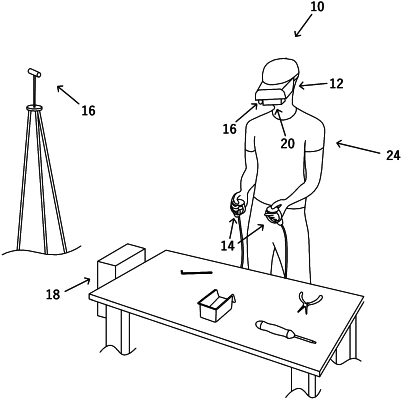| CPC G06T 19/006 (2013.01) [G02B 27/0172 (2013.01); G06T 7/251 (2017.01); G06T 19/003 (2013.01); G02B 2027/0138 (2013.01)] | 20 Claims |

|
1. A method of operating an augmented reality (AR) system, the method comprising:
capturing first images of a first real-world workspace using a camera of a first head mounted AR device of the AR system being worn by a first user;
processing the first images using a first processor of the AR system to identify physical objects in the first real-world workspace and detect 3D positions of the identified physical objects in a 3D space corresponding to the first real-world workspace;
generating, based on user inputs from the first user, first augmented reality content displayed with respect to the identified physical objects in the first real-world workspace;
capturing second images of a second real-world workspace using a camera of a second head mounted augmented reality device being worn by second user;
processing the second images using a second processor to identify physical objects in the second real-world workspace and detect 3D positions of the identified physical objects in a 3D space corresponding to the first real-world workspace; and
rendering the first augmented reality content on the display of the second head mounted augmented reality device, first augmented reality content being displayed with respect to identified physical objects in the second real-world workspace that correspond to the physical objects in the first real-world workspace.
|